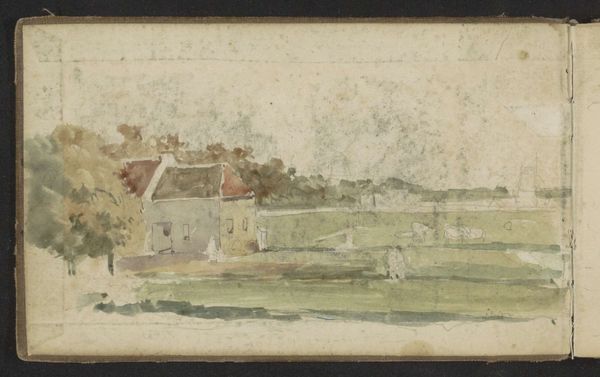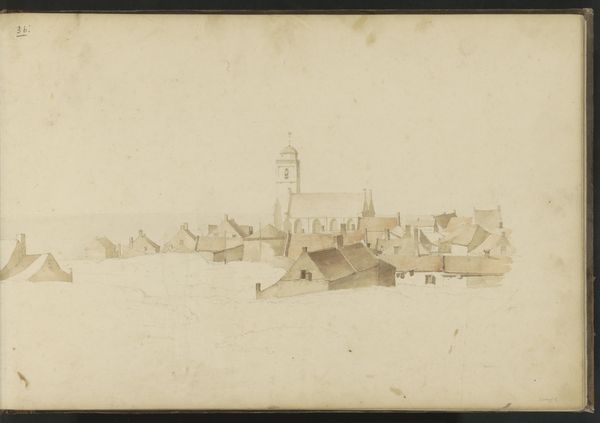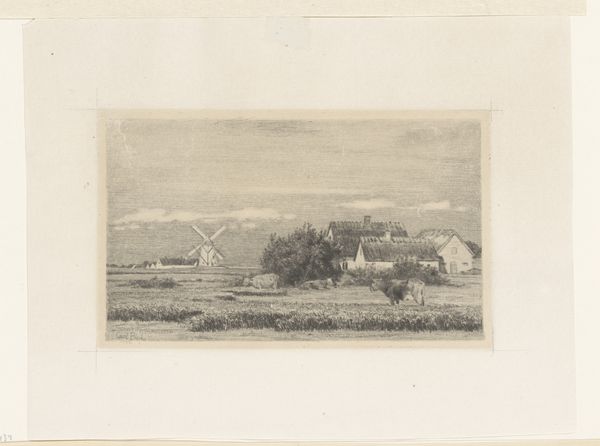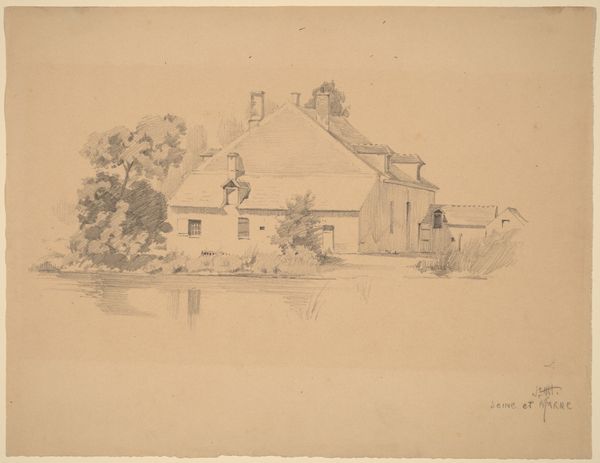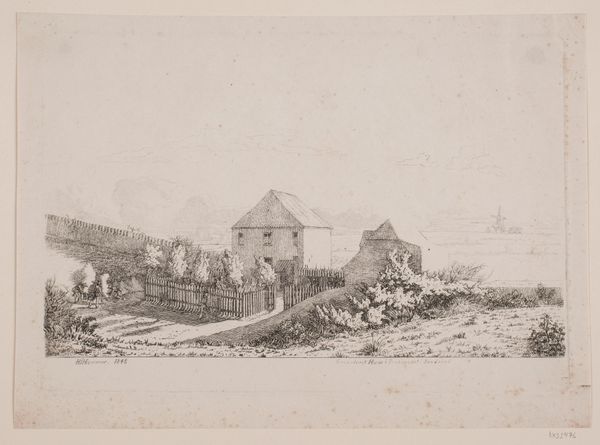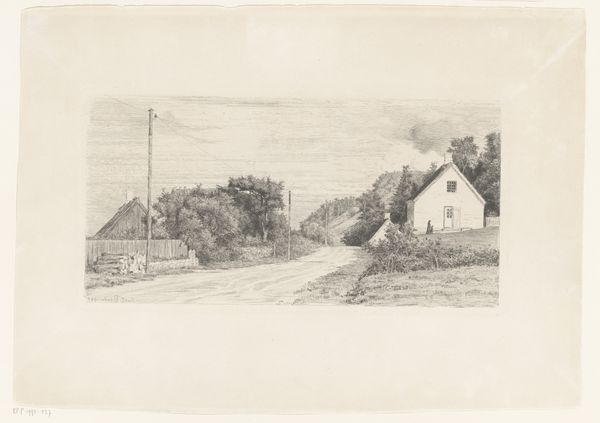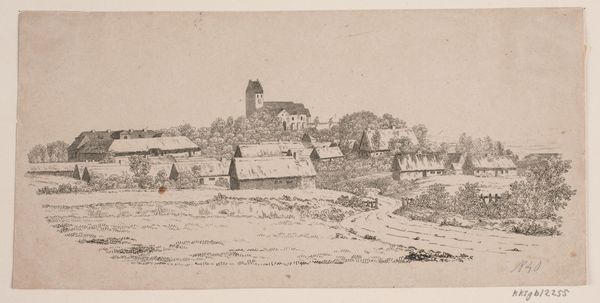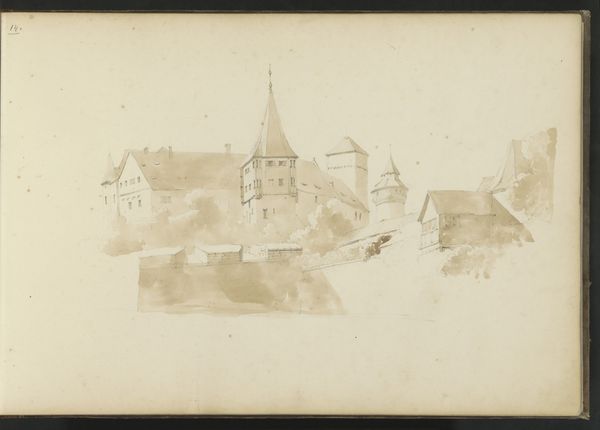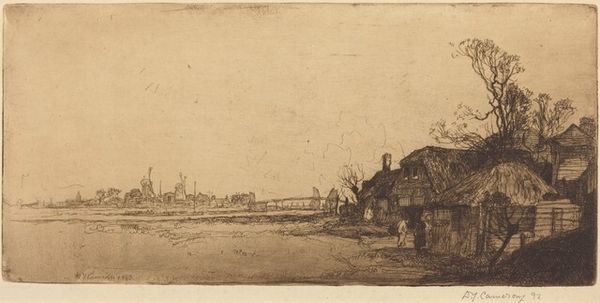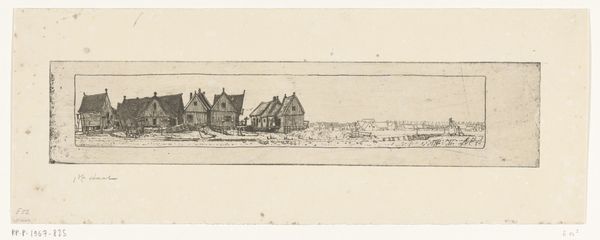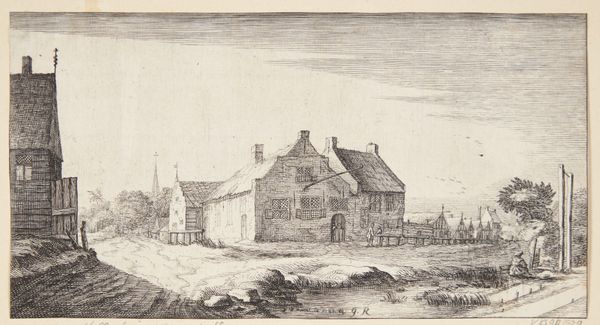
Copyright: Rijks Museum: Open Domain
Editor: So, here we have "Huizen te Scheveningen," which roughly translates to "Houses in Scheveningen," a watercolor and ink drawing on paper by Kasparus Karsen, dating between 1820 and 1896. It’s a pretty simple scene, but the monochromatic washes really create a specific mood. What’s your perspective on this piece? Curator: Well, immediately I'm drawn to the materiality of it all. The paper, the watercolor...consider the socio-economic context. Paper wasn't always readily available, watercolor as a medium speaks to portability, perhaps for sketching *en plein air.* How might the accessibility of these materials influenced Karsen's artistic choices? Editor: That's an interesting point, because I hadn’t considered the price of paper impacting artistry. Now, thinking about the material constraints, how would that also apply to the final composition of the artwork itself? Curator: I believe that focusing on the constraints can tell us a lot about the artist's process, particularly when they work within a Romanticism context. For instance, the scale – it seems relatively small, which further indicates its practical usage. Also, the swift application of watercolor suggests efficiency. Editor: I can definitely see the efficient application, you see some bleeding that happens in water color works, which speaks to the material and quick labor. How would an understanding of that shift our perspective on the aesthetic value in general? Curator: I think it makes us question the established boundaries between "high art" and more practical skills of observation, documenting place. Karsen documented buildings and locations in The Hague for use as scenery in the Royal Theater. It shows what someone was commissioned to create at this period of time to achieve this work, where materiality is inherently related to consumption. Editor: So instead of focusing solely on the picturesque scene, understanding the means of production allows us to appreciate it as a form of social documentation tied to both artistry and commercial considerations? Curator: Precisely. It's about seeing the labor and context embedded within the materials themselves, revealing the circumstances of art creation at the time. Editor: That’s a really helpful way to frame it. I never thought about watercolor in terms of its availability dictating artistic choices. Curator: That’s where materialist history is so rewarding - it shifts the focus away from purely aesthetic judgments toward an appreciation of how art production interacts with broader societal forces.
Comments
No comments
Be the first to comment and join the conversation on the ultimate creative platform.

